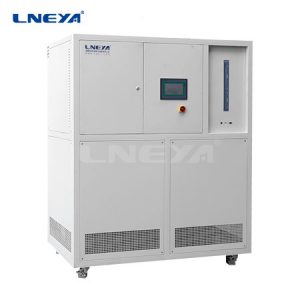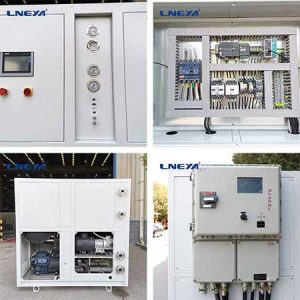How to solve the problem of overheating in small water chiller?
If the LC -25°C ~ -5°C Refrigeradores de baixa temperatura is operating under excessive wear and tear, it will inevitably experience high operating temperatures, or due to uneven distribution between the bearings and the journal, the temperature will continue to rise due to friction during high-speed operation. For such failures, timely and effective treatment is necessary to avoid overheating the chiller and causing serious machine accidents.

Many times, overheating, also known as excessive temperature, often leads to higher noise levels in the chiller. Due to excessive wear and tear, overheating faults in the chiller often result in varying degrees of abnormal noise. If various abnormal noises occur in the chiller, it is necessary for professional personnel to analyze the specific reasons for the abnormal noise in a timely manner. Due to the relatively simple operating principle of the stand mounted chiller, Therefore, it is possible to determine the specific cause of the fault in a relatively short period of time, in order to achieve the goal of quickly resolving the fault and providing guarantees for the smooth improvement of the operating efficiency of the chiller.
In fact, overheating of the chiller does not only refer to the high temperature of the computer room, but also to the high temperature of the suction and exhaust, especially the exhaust. It is common and will not be listed here for the time being. To reduce the possibility of excessive temperature in the chiller, it is first necessary to start with the selection of a suitable chiller.

Secondly, it is necessary to have a complete installation, which must comply with the standards for installation. Finally, it is necessary to conduct regular inspections, maintenance, and upkeep. It is prohibited to operate beyond the standard and avoid excessive temperature of the chiller. Once overheated, the chiller will experience various problems such as a decrease in cooling efficiency. If enterprises want the chiller to operate stably, they must regularly maintain and promptly handle any problems found in order to avoid such problems.
1. The compressor is overloaded and operates with overcurrent. The possible reasons are that the cooling water temperature is too high, the refrigerant is filled too much, or there is non-condensable gas such as air in the refrigeration system, resulting in high compressor load, manifested as overcurrent, and accompanied by high voltage faults.
2. Electrical failure caused overcurrent operation of the compressor of the chiller. For example, the three-phase power supply voltage is too low or the three-phase is unbalanced, resulting in excessive current or a phase current; The AC contactor is damaged, causing contact erosion, resulting in excessive contact current or excessive current due to phase loss.

3. The overheat protection module SSM of the refrigerator is damp or damaged, the intermediate relay is damaged, and the contacts are poor. This is manifested as an overheat fault occurring immediately after starting, and the compressor cannot start. If the unit electronic board malfunctions or communication malfunctions, it may also falsely report an overheating fault.
The reason for the compressor overheating fault is as follows: the compressor load is too large, and the overcurrent is running. Possible reasons are: high cooling water temperature, overcharging of refrigerant, or presence of non condensable gases in the refrigeration system, resulting in high compressor load, overcurrent, and high-pressure faults.
Electrical failure caused the compressor of the cooler unit to run over current. If the three-phase power supply voltage is too low or three-phase is unbalanced, the current or a phase current is too large; The AC contactor is damaged and the contacts are burned, resulting in excessive contact current or excessive current due to phase loss.
 LNEYA
LNEYA
 简体中文
简体中文


















































































